Your washing machine is not draining properly and it’s causing waterlogging in your home.
You’ve been trying to figure out a way to clear the waterlogging, but you don’t know where to start.
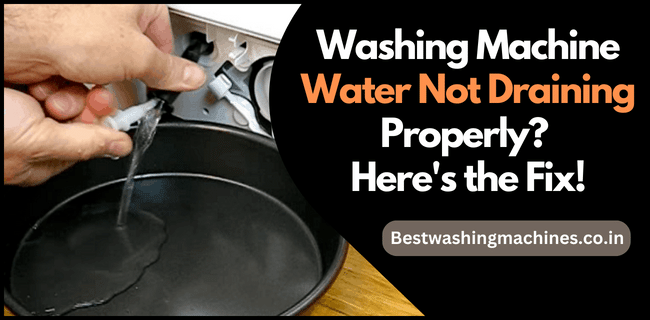
In this blog post, we’ll take a look at some of the common causes of a washing machine that won’t drain and give you a few tips on fixing the problem. Keep reading to learn more!
Contents
8 Best Ways to Fix Washing Machine Water Not Draining Properly
A washing machine that doesn’t drain properly can be a real headache.
Fortunately, it’s a common problem that can be fixed quickly and easily. Follow these simple 8 best ways to clear up your washing machine water drainage issue. Let’s jump in.
Drain Pump Problems
One of the most common problems that people face with their washing machines is that the drain pump is not functioning properly. This problem is usually caused by a blocked or clogged drain line, an issue with the motor, or a malfunctioning drain pump. If a washing machine is not draining properly, it can be difficult to determine the exact cause. The first step to troubleshooting the issue is to check the drain line for any obstructions. If there are no blockages, then the motor or drain pump may need to be replaced.
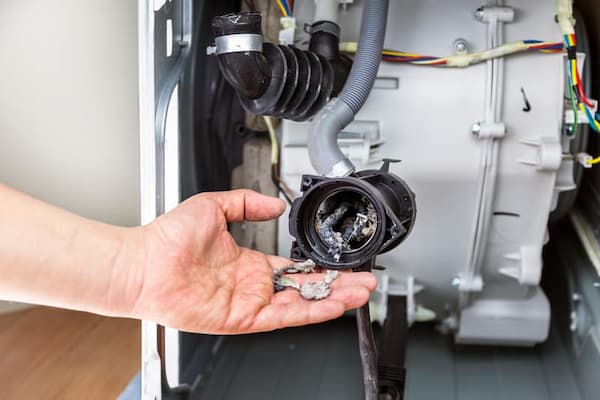
If the drain line is clogged, the drain pump needs to be replaced. To do this, the washing machine needs to be taken apart and the old pump needs to be removed. Once the old pump is removed, the new pump can be installed as any other parts that may be necessary. The pump has to be connected to both the water supply and the drain line. Once the pump is connected, the machine should be put back together and tested to ensure it is working properly.
Another common issue with washing machines is that the drain pump is not draining the water properly. This can be caused by an issue with the motor or a malfunctioning pump. To diagnose the issue, the motor should be tested for proper voltage and if it is not functioning properly, it should be replaced. If the motor is functioning properly, then the drain pump should be cleaned and checked for any debris or blockages. If there are any blockages, they should be cleared before the pump can be replaced.
Drain Hose Problems
Having a washing machine not draining properly can be a frustrating experience. One of the most common causes of this issue is a damaged or clogged drain hose. The drain hose connects the drain pump to the drain pipe and allows water to be directed out of the washing machine and into the home’s plumbing system.
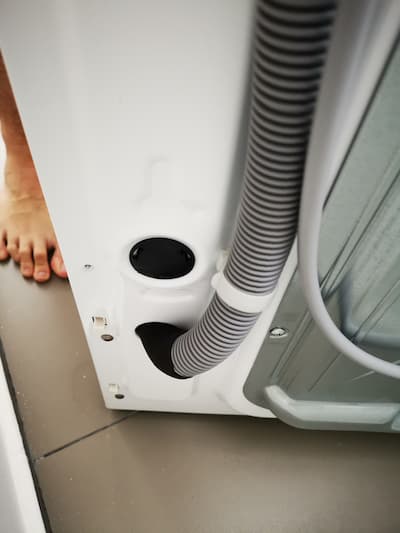
If the hose is damaged or clogged, it can cause water to build up in the washing machine and not drain properly. To troubleshoot this issue, it is important to check the hose for any visible damage or blockage. If the hose is blocked, it should be removed and cleaned. If the hose is damaged, it should be replaced with a new one.
When replacing the drain hose, it is important to ensure that it is properly connected to the drain pump and the drain pipe. If the hose is not connected properly, the water will not drain properly. Additionally, the hose should be firmly secured in place to prevent any leaks or blockages. By taking these steps, you can help ensure that your washing machine drains properly and avoid any potential damage or flooding.
Poor Load Distribution
The load distribution in a washing machine (and the reason there are holes in the drum) is so that the water can fill the drum evenly. When laundry is left in the washing machine too long, then the water doesn’t get the chance to clean it thoroughly.
The water will be pushed up and over the laundry, which will be left sitting at the bottom.
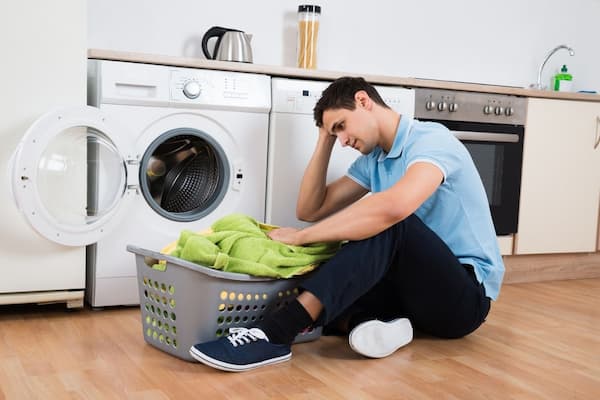
If there are a lot of laundries, then the water might not fill up the drum and sink. The laundry will be pushed up and over the sides, which means the laundry on the bottom won’t get clean.
If there is very little laundry in the machine, then the water might fill to the top, which means that it will spill over and onto the floor.
Drive Belt Problems
The drive belt of a washing machine is an integral component that keeps the entire machine running. When there are problems with the drive belt, the washing machine may not be able to work properly. This can lead to a variety of issues, such as the machine not draining properly or not spinning at all. In order to identify and address these issues, it is important to understand how the drive belt works and what you can do to ensure that it is maintained properly.
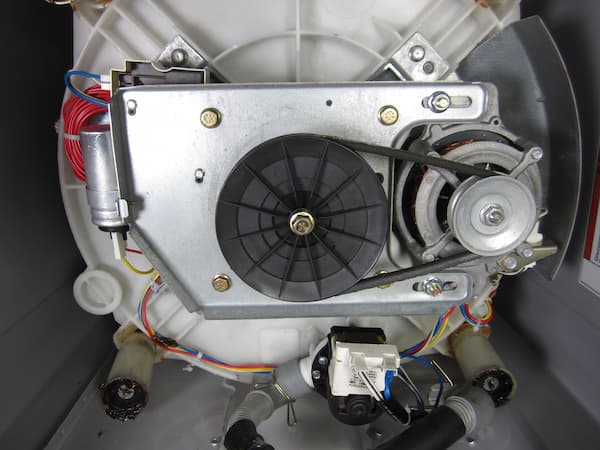
The drive belt of a washing machine is a rubber belt that is connected to the motor and the pulley. It is responsible for transferring the power from the motor to the pulley, which in turn moves the washing machine drum. If the drive belt is worn or frayed, it can result in the machine not draining or spinning. Additionally, the drive belt can become misaligned or stretched, which can lead to further issues with the washing machine.
In order to prevent any problems with the drive belt, it is important to inspect the belt regularly. If you notice any signs of wear or damage, it is important to replace the belt right away. Additionally, it is important to check that the belt is properly tightened and aligned. If the belt is too loose, it can cause problems with the washing machine’s performance. Finally, you should also make sure that the pulleys, motor, and other components of the washing machine are in good condition and that the drive belt is replaced with the correct size and length belt for the specific model of the washing machine. By following these steps, you can ensure that the drive belt of your washing machine is able to function properly and that your machine is able to drain and spin efficiently.
Clogged Drain Line
When your washing machine starts to give problems, it is important to figure out what is causing them. One problem that many people have is a clogged drain line. If you experience this problem, there are some things that you can do to get rid of the problem.
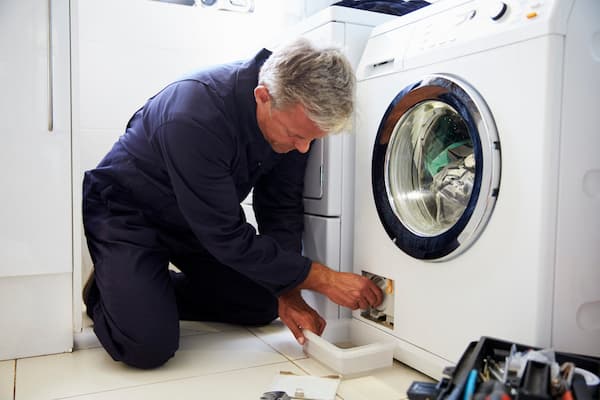
If the clog is in the drain line that extends from the washing machine, you should first check the drain hose. Make sure that the drain hose is not clogged or damaged. You should also make sure that the drain hose is plugged up correctly. If the hose is plugged up incorrectly, water could back up into the washing machine.
If the clog is in the drain hose, you should remove the hose and inspect the hose. Clean the hose out with a scrub brush if necessary and then reinsert the hose and reconnect it.
Lid Switch Problems
One of the most common problems faced by people using washing machines is lid switch problems. A lid switch problem can be identified when the washing machine does not drain, even when it is turned on. This is caused due to a malfunctioning lid switch in the washing machine. The lid switch is designed to detect the presence of a lid on the machine and prevent it from draining if the lid is not closed. The switch usually consists of two metal contacts that close when the lid is closed, sending an electrical signal to the motor control unit.
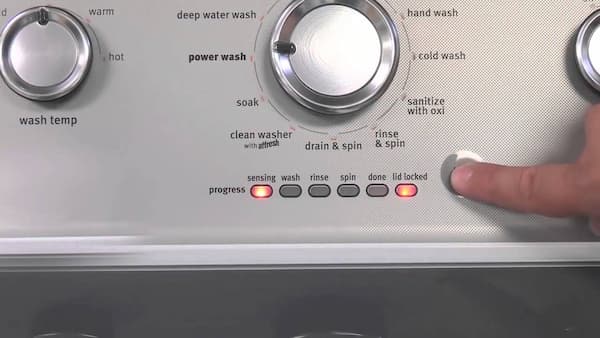
The most common cause of lid switch problems is a broken or malfunctioning lid switch. If the switch is damaged, it will not be able to detect the presence of a lid and will not send the necessary signal to the motor control unit. This can cause the washing machine to not drain properly. Another common cause of lid switch problems is a faulty wiring connection. If the connection between the switch and the motor control unit is not properly secured, it can prevent the switch from sending the necessary signal.
If you suspect you have a lid switch problem, it is important to have the issue resolved as soon as possible. Lid switch problems can be fixed by replacing the switch or repairing the wiring connection. If the problem persists, it is best to contact a professional for further assistance.
Plumbing System Problems
When it comes to plumbing system problems, a common issue that can arise is a washing machine not draining properly. This issue can be quite problematic, as it can cause a significant amount of disruption and damage to other parts of the plumbing system. In order to properly diagnose and address the issue, it is important to have a good understanding of how the washing machine is connected to the plumbing system.
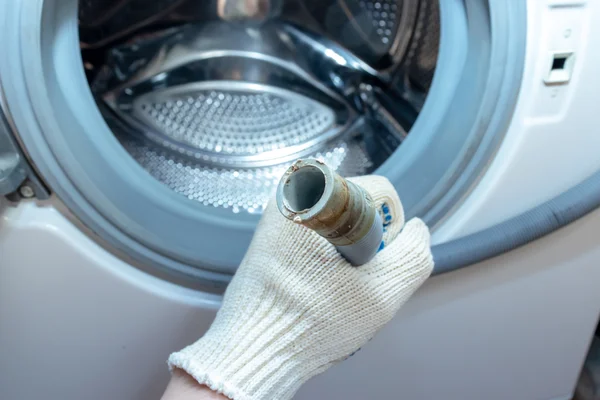
The first step in diagnosing the problem is to ensure that all of the connections between the washing machine, the drainpipe, and the sewer system are properly secured and functioning as they should. If any of these connections have become loose or blocked, this could be the source of the issue. Additionally, it is important to make sure that the drainpipe is not clogged or blocked, as this can also lead to a washing machine not draining properly.
Finally, it is important to check the pump that is connected to the washing machine. This pump is responsible for moving the water from the washing machine to the sewer system, and if it is not functioning correctly, it could be the cause of the draining issue. In some cases, the pump can be fixed simply by cleaning it, while in other cases, the entire pump may need to be replaced.
Overall, a washing machine not draining properly can be a difficult issue to diagnose and repair. However, by understanding the different components of the plumbing system, the connections between the washing machine and the other parts of the system, and the role of the pump, it is possible to identify and address the problem.
Reset the Washing Machine
Having trouble with your washing machine? Are you seeing a “not drain” or “not spin” error message? If so, it’s time to reset the washing machine. Resetting the washing machine can be a simple process, but there are a few steps that need to be taken to ensure it is done correctly.
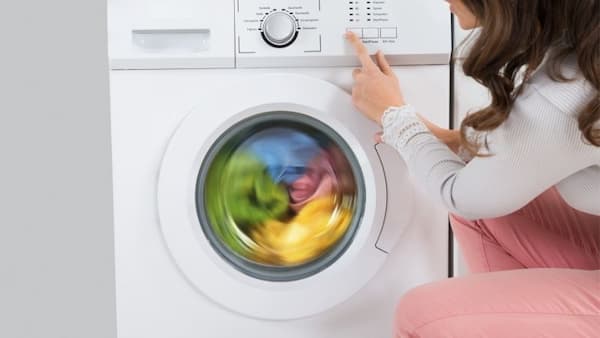
- First, unplug the washing machine from the wall outlet. This will disconnect all electricity from the appliance, allowing you to begin the reset process.
- Once the power is disconnected, press and hold the power button for 30 seconds. This will make sure all power has been cleared from the washing machine.
- Next, press and hold the “Start/Pause” button for 3-5 seconds. This will reset the washing machine’s internal programming, giving you the chance to start a new cycle.
- Once the Start/Pause button has been held for the proper amount of time, the washing machine should be reset.
- You can then plug the appliance back into the wall outlet and continue with the cycle you wish to run.
By following these steps, you can reset the washing machine with ease and get back to doing your laundry!
Conclusion
The good news is that clearing a clogged washing machine drain is not as difficult as it may seem. With the right tools and knowledge, you can quickly get your machine up and running again. Remember to always be careful when working around electricity and water! With these steps, you can easily fix the problem of washing machine water not draining properly and enjoy your machine again.
FAQ’s on Washing Machine Water Not Draining Issue
We have covered all the most frequently asked questions in the below section. Make sure to check all the questions and clear your doubts right away.
Q1. What could cause a washing machine not to drain?
A. When it comes to washing machines, not draining can be a frustrating problem. It can be caused by a number of different factors ranging from a blocked drain pump to a malfunctioning timer switch. One of the most common causes of a washing machine not draining is a blocked drain pump. This is usually caused by a build-up of lint, dirt, and other debris. A blocked drain pump can prevent the washing machine from draining properly and can prevent it from spinning. Another common cause of a washing machine not draining is a malfunctioning timer switch. This switch controls the water level and can cause the machine to stop draining if it is stuck in the wrong position. Finally, a faulty pressure switch could be the culprit. This switch is responsible for detecting the amount of water in the drum, and if it is malfunctioning, it can cause the machine to not drain.
No matter the cause of your washing machine’s drainage problems, it is important to identify the cause and address it quickly. If not, the problem could become more severe and cause more damage. If you are having trouble figuring out the cause of your washing machine’s drainage issue, it may be time to call in a professional. A repair technician will be able to diagnose the problem and help you find the best solution.
Q2. How do I fix the drainage on my washing machine?
A. If your washing machine is not draining or spinning correctly, it may be due to a clogged or blocked drainage hose. The drainage hose is the tube that connects your washing machine to the drainage pipe, and it can become clogged with lint, dirt, and other debris. To fix the drainage, start by disconnecting the power supply to your washing machine. Then, check the drainage hose and see if it is clogged or blocked. If it is, you can use a vacuum cleaner to remove the blockage. Once the hose is clear, reconnect the power supply and run a cycle to test if your washing machine is now draining and spinning correctly.
In some cases, a clogged or blocked drainage hose may not be the only issue. You may also need to check the pump filter or the drain valve to see if they are clogged or blocked. If they are, you may need to disassemble your washing machine and clean the parts manually. To do this, it is best to refer to your washing machine’s manual for instructions. Additionally, you may need to use a special tool, such as a drain snake, to ensure that all the parts are clean and functioning properly.
In any case, it is important to regularly check your washing machine’s drainage hose and pump filter or drain valve to ensure they are free of debris. If you find any blockages, take the necessary steps to clean or remove them. Doing this will help to prevent drainage and spinning issues in the future.
Q3. What causes a washing machine not to drain and spin?
A. If you notice water draining slowly or not at all, first make sure the washer’s drain hose isn’t kinked, clogged, or completely disconnected. If the drain hose looks good visually, check the rubber flap behind the washer that blocks the drainage hose. If it’s clogged or blocked, clean it with an all-purpose cleaner and running water to clear it. If the drain flap is clean and the drain hose is unobstructed, check for debris in the drum. If the debris is large or heavy, it may be preventing the drum from spinning.
